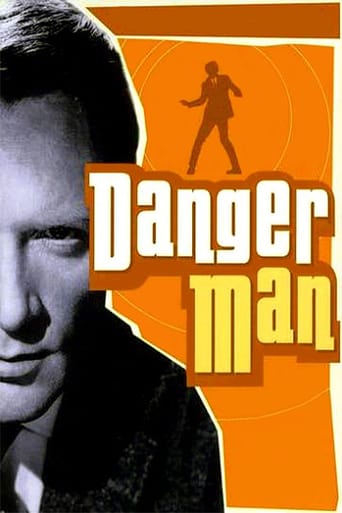Coastal Cruiser ([email protected])
If you've never watched the "Spy TV" of the 60s you are in for a treat. Two of the ones I especially enjoyed were the American based 'I Spy' series, starring the inimitable Bill Cosby and the show's co-creator Robert Culp, and the British based 'Danger Man' series (known as 'Secret Agent' in the US) starring the enigmatic Patrick McGoohan. Comparing I Spy to Danger Man helps ferret out the strengths of both shows.To set a context, Danger Man came out in 1960. It was pre-James Bond, pre-I Spy, and pre-most anything else in the genre. Danger Man, which began life as a ½ hour production and later morphed into a 1 hour show in 1964, launched the first of the solo, lone wolf-esk, righter-of-wrong characters with that all important ultra-cool substrate. 6'2" consummate actor Patrick McGoohan is secret agent John Drake. Just as Peter Falk fully embodied 'Columbo' (a show that received both McGoohan and Culp as guest stars) it is impossible to imagine anyone other than McGoohan in the John Drake role. As with I Spy's Kelly Robinson & Alexander Scott, Danger Man's Drake traveled the world, engaging in high intrigue across other lands and within other cultures.And it is the traveling element that let's us draw our first distinction between I Spy and Danger Man. I Spy was shot on location! With few exceptions, Danger Man was shot in the studio, with stock footage of other countries cleverly blended in. But I Spy was truly shot on location. They actually took the crew to Italy, to Greece, to Spain and to Asia. When you're watching I Spy you are getting a glimpse of what it looked like around the world in the 60s. In my view this is one of the best reasons to go through the series. It is 'boots on the ground' realism as we follow Robinson and Scott on their world-wide adventures.I Spy does not hold up as well as Danger Man. The latter had very tight scripts, thanks in large part to the constant involvement of the show's creator and writing contributor Ralph Smart, as well as strong input from McGoohan. This may be hard to believe but I don't think I've ever seen a bad Danger Man. I Spy on the other hand sprouted a few stinker episodes. There is one reason for this; weak writing. Robert Culp actually discusses the show's writing in the commentary track he recorded for several episodes. The concept of I Spy was great, with Culp and Cosby adeptly pulling off the playful banter that was the substrate of the show. But the thing was, the writers often didn't get it. They often wrote *under* the show (scripts were often loose and full of plot holes).However, the chemistry of Culp and Cosby, the locations shooting with its voyeuristic look at the 60s is without compare. I don't think I'd buy the whole series, but there are some great episodes. Conversely, I do own the entire Danger Man series. If you check it out don't overlook the earlier ½ hr series. It is surprisingly well done. They somehow managed to contain an integral story arc in that 28 or so minutes. The intro of this first series also has a very Bond-like McGoohan introducing himself as "Drake .... John Drake". This, two years before Sean Connery introduced himself as Bond ... James Bond in Dr. No. It should be noted too that McGoohan was offered the James Bond role but turned it down.The last contrasting feature I can think to bring up is the use of firearms. Patrick McGoohan, who was a very moral man and had a heavy influence on the John Drake character, rarely used a gun. He wanted a family show, with minimal violence and sex. Drake was all about brains over brawn, and thanks to great writing the gun element is not missed. Scott and Robinson are more conventional spys and are rarely caught not packing. The pair are somewhat discreet with their use of unnecessary gun play however, so I would say this difference in the shows is less about any I Spy violence and more about the extra work required by the Danger Man writing staff to get Drake out of a jam without the quick and easy plot device afforded by a gun.Music-wise I Spy and Danger Man are on similar footing, with memorable scores for both series. The 1960-62 ½ hr Danger Man has a punchy, jazzy theme, with an even punchier theme accompanying the 1964-66 1 hr version (sold in the USA as Secret Agent, with the unforgettable Johnny Rivers theme). I absolutely love the I Spy theme as well, which rests nicely on the opening visuals where Kelly Robinson, in the blink of an eye transforms from a racket swinging tennis bum to an armed spy, taking the shot, and disappearing through the doorway formed by the upper case "I" in the title. So, a total of four themes... all of them winners (as is true of so many 60s TV shows).ps - Given the claim made about Danger Man being one of the first spy dramas with a super cool agent, it should be noted that a black & white production of Ian Fleming's 'Casino Royale' was aired in the 1950s on live TV in America. You can find this short but excellent production included in the extras on the DVD for the 1967 parody version of (ASIN:B00005JL0I) Casino Royale starring Peter Sellers. In another interesting parallel between John Drake and James Bond, the Bond in this 50's production is an American working for the CIA. Likewise the early Danger Man series had John Drake also portrayed as an American, albeit working for NATO. All subsequent Drake/Bond characters were of course British.

